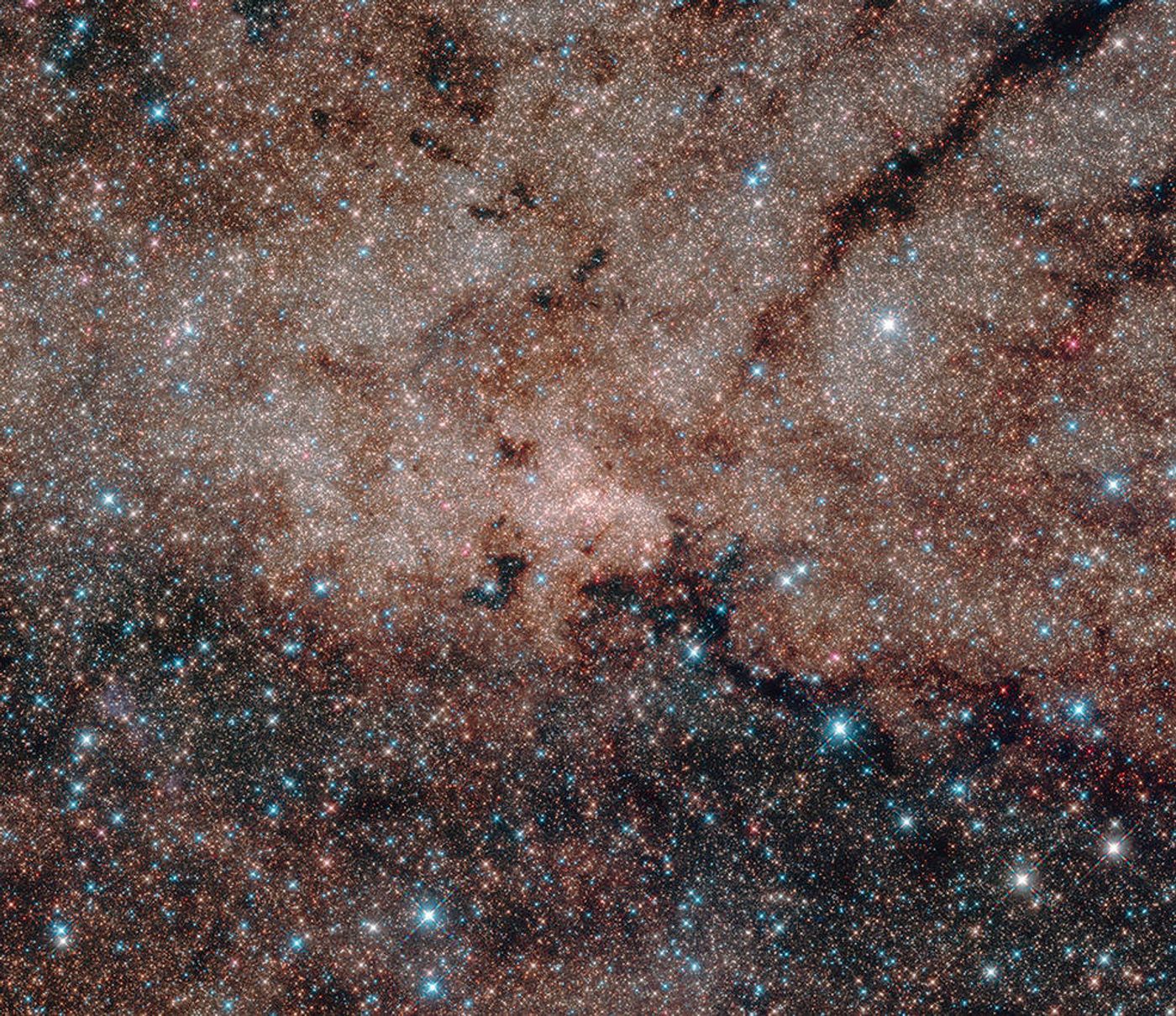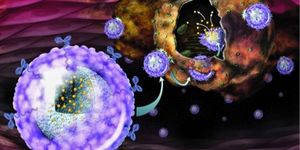Hubble Space Telescope Grabs Stunning Photo of Milky Way's Center
NASA recently spent some time using the Hubble Space Telescope to capture a massive portrait of our own Milky Way galaxy. The lenses were pointed at the center of our galaxy, which is about 27,000 light years away from Earth, where it’s believed that a supermassive black hole about 4 million times the mass of our Sun resides.

The portrait is made out of nine separate photos that were stitched together and were taken from the Wide Field Camera 3 onboard the space telescope.
It is explained in a statement from NASA that teams used Hubble’s infrared imaging technology to peer through some heavy space dust, and some of the space dust was so thick that even Hubble’s high-power infrared couldn’t penetrate all the way through.
"The red stars are either embedded or shrouded by intervening dust," NASA explained. "Extremely dense clouds of gas and dust are seen in silhouette, appearing dark against the bright background stars. These clouds are so thick that even Hubble’s infrared capability could not penetrate them."
After getting the infrared imagery, NASA used algorithms to convert the images to visible color, such that we can all see what we should expect to see from space in natural color.
The image shows a massive cluster of bright stars at the center of our galaxy, but astronomers note that there are at least 10 million stars that don’t show up in the image due to the fact that they’re either too dim to be seen, or are being shrouded by the thick dust clouds that couldn’t be penetrated by Hubble’s infrared imaging devices.
Scientists are hoping to use the information gathered in this photograph to better understand how and why star clusters like this one are formed, and the newfangled view of the galaxy’s center just might provide some clues as well as continued investigations into the heart of our galaxy.
Source: NASA via National Geographic








